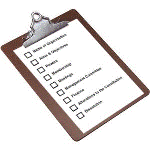Department of Management

Department of Management: Faculty Publications
Document Type
Article
Date of this Version
2011
Citation
Published in Human Resource Management Review 21 (2011), pp. 243–255.
doi:10.1016/j.hrmr.2010.07.001
Abstract
Resilient organizations thrive despite experiencing conditions that are surprising, uncertain, often adverse, and usually unstable. We propose that an organization's capacity for resilience is developed through strategically managing human resources to create competencies among core employees, that when aggregated at the organizational level, make it possible for organizations to achieve the ability to respond in a resilient manner when they experience severe shocks. We begin by reviewing three elements central to developing an organization's capacity for resilience (specific cognitive abilities, behavioral characteristics, and contextual conditions). Next we identify the individual level employee contributions needed to achieve each of these elements. We then explain how HR policies and practices within a strategic human resource management system can influence individual attitudes and behaviors so that when these individual contributions are aggregated at the organizational level through the processes of double interact and attraction–selection–attrition, the organization is more likely to possess a capacity for resilience.
Included in
Business Administration, Management, and Operations Commons, Management Sciences and Quantitative Methods Commons, Strategic Management Policy Commons


Comments
Copyright © 2010 Elsevier Inc. Used by permission.